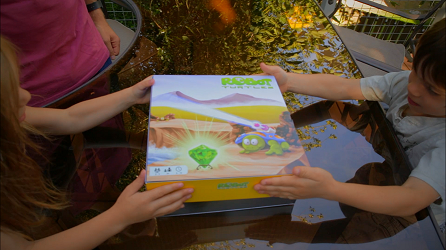Anatomy of a $631,230 Kickstarter Video
First things first: the last of the Robot Turtles Kickstarter production run is still available on Amazon for $34.95 plus $9.95 USÂ shipping, with international shipping available. If you order today, Dec 19, you should get it in time for Christmas!
In early September, I launched a Kickstarter campaign for Robot Turtles – a board game that teaches programming to kids ages 3-8.  It became the bestselling boardgame in Kickstarter history, and while there were a lot of moving pieces (and a lot of luck) involved in making that happen, I think the video was a big part of the project’s success.
How big? Â Well, it’s hard to say because Kickstarter’s analytics are limited. Â But 72,181 people played the video and 13,765 pledged. Assuming everyone who pledged played the video (which is bogus but will have to suffice), that’s an implied conversion rate of about 20%. Â Which is crazy high.
I’ll tell you the whole story of the video, but here’s the TL;DR.
1) You get to convey at most two ideas: one that you say, and one that you show.
2) It’s worth the money to hire a pro, but…
3) Let reality shine through.
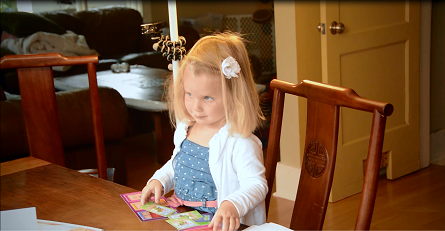 On the one hand, I knew that the hook of the game was the uniqueness and incongruity of the idea: a *board* game that teaches *programming* to *preschoolers*. Â Teaching programming with a board game? Teaching programming to preschoolers? Both of those things sound unusual, and putting them together was could be a great conceptual hook.
On the one hand, I knew that the hook of the game was the uniqueness and incongruity of the idea: a *board* game that teaches *programming* to *preschoolers*. Â Teaching programming with a board game? Teaching programming to preschoolers? Both of those things sound unusual, and putting them together was could be a great conceptual hook.On the other hand, I actually didn’t invent the game to teach my kids programming. Â I invented it because I thought it would be fun to play with them. Â I hate Candyland and much of the other random nonsense that passes for kids’ games. Â I wanted to create some awesome family moments and put them in a box.
This was a problem. Â Marketing and complexity are a bad combination.
But I decided against my own better judgment to split the difference, and this is what I did. Â I decided to make the talk track of the video about programming. Â Explain the game, how it works, and talk about sharing programming with kids.
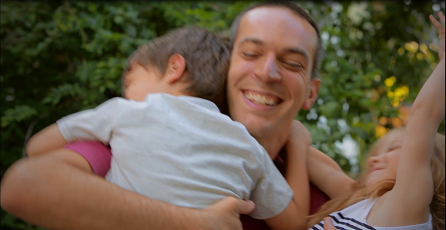 But all the visuals were about one clear message: Happy Family. Â Game equals Happy Family. Â Over and over and over again. Â (My only regret was that my wife’s school schedule didn’t fit the shooting schedule, so it was mostly dan + kids – but needless to say, there would be no Robot Turtles without my amazing and supportive better half!)
But all the visuals were about one clear message: Happy Family. Â Game equals Happy Family. Â Over and over and over again. Â (My only regret was that my wife’s school schedule didn’t fit the shooting schedule, so it was mostly dan + kids – but needless to say, there would be no Robot Turtles without my amazing and supportive better half!)One day I realized that the summer was almost over and if I didn’t launch my campaign soon, I would miss Christmas. Â In a bit of a panic I dashed over to my friends at Bootstrapper Studios, a video production house with several $100k+ kickstarters to its name. Â They dropped everything for two hours and we whiteboarded a plan.
At that point I realized I had two problems.
1) I didn’t have any pictures or video of anyone besides my kids playing the game.
2) That was because nobody besides my kids had ever played the game.
In a bit of a hazy panic I went to a Geekwire networking event that happened to be scheduled for that evening. Â I dashed around for about forty five minutes, begging startuppers with kids to bring their offspring to my house the next day. Â I worked feverishly late in to the night to build a backup prototype out of equal parts inkjet paper, spray glue, and desperation. Â There were now two copies of Robot Turtles in existence.
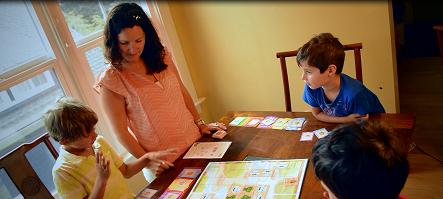 The next day I filled the house with borrowed cameras and lights. Â I ambitiously (ok, stupidly) decided it would be a combination playtest/video shoot, so I handed the befuddled parents a hastily-jotted instruction sheet, promised the kids a “really awesome snack” once they finished, and stood back to watch them figure it out. Â During the 30 minutes between visitors I rewrote rules, smoothed wrinkled cards, and chugged black coffee.
The next day I filled the house with borrowed cameras and lights. Â I ambitiously (ok, stupidly) decided it would be a combination playtest/video shoot, so I handed the befuddled parents a hastily-jotted instruction sheet, promised the kids a “really awesome snack” once they finished, and stood back to watch them figure it out. Â During the 30 minutes between visitors I rewrote rules, smoothed wrinkled cards, and chugged black coffee.By the end of the day it was clear I was on to something. Â The parents and kids all seemed to love it. Â I hastily put the house back together before my own kids got home.
The rest of the experience was quick but measured. Â I shot some “practice” footage of my kids explaining the game, then an hour of them explaining it over and over again. Â As it turned out the practice footage (complete with road noise) was awesome and the scripted stuff was tossed. Â Bootstrapper came over and shot some footage of us playing together. Â I used Audiosocket.com to find the amazing track “Happy Ever After” by Niklas Aman and licensed it appropriately.
The worst part was the “ask”, where I implore people to back the project. Â I wrote it out, hated it, rewrote it 20 times. Â Then sat down with Bootstrapper to shoot it and realized I needed to memorize it. Â 20 takes later it still sucked, and the version you see near the end is the two least-bad ones stuck together. Â I still wince when I watch it.
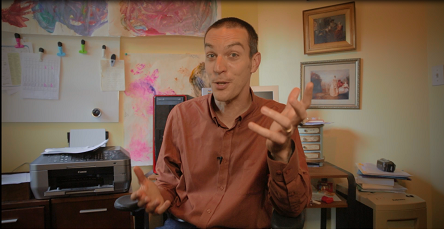
They started sending cuts over and we started refining: should we use the girls waving or the boys cheering? The explanation with the blurry video or the one with the noisy audio? Â Can you make that cut less obvious? Is my nose really that big?
The answers all sorted themselves out and before I knew it, September had arrived and the video went up.
The game’s out of print, but I just listed a few extra copies on Amazon. Â I hope you get a chance to check it out! Â (Oh, and if you haven’t seen it… here’s the video).
(You might want to subscribe or follow me on Twitter so you don’t miss new articles)
